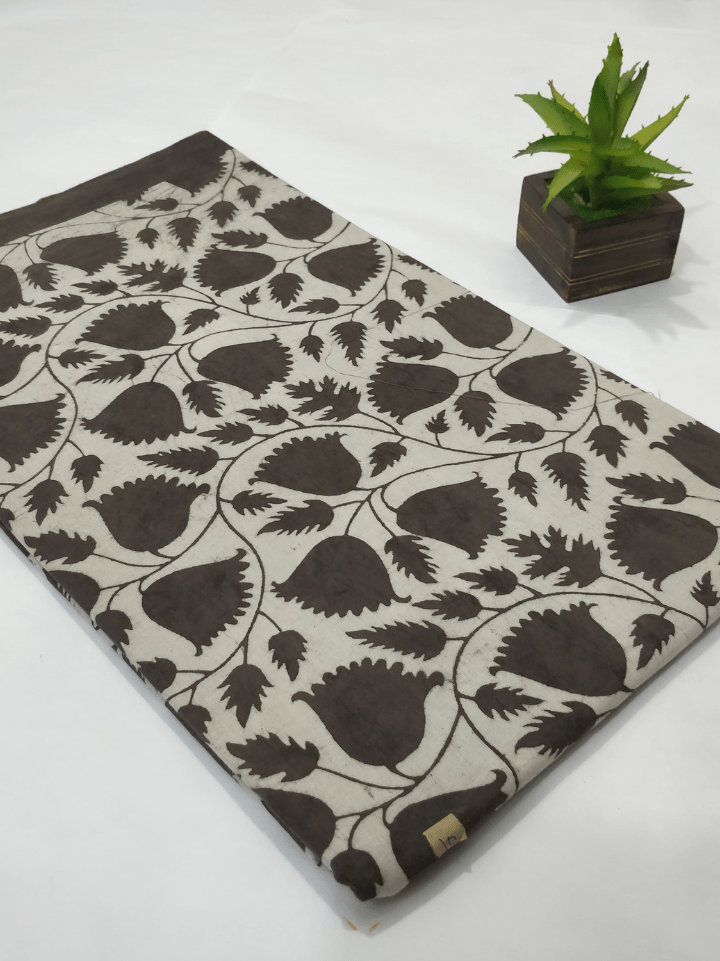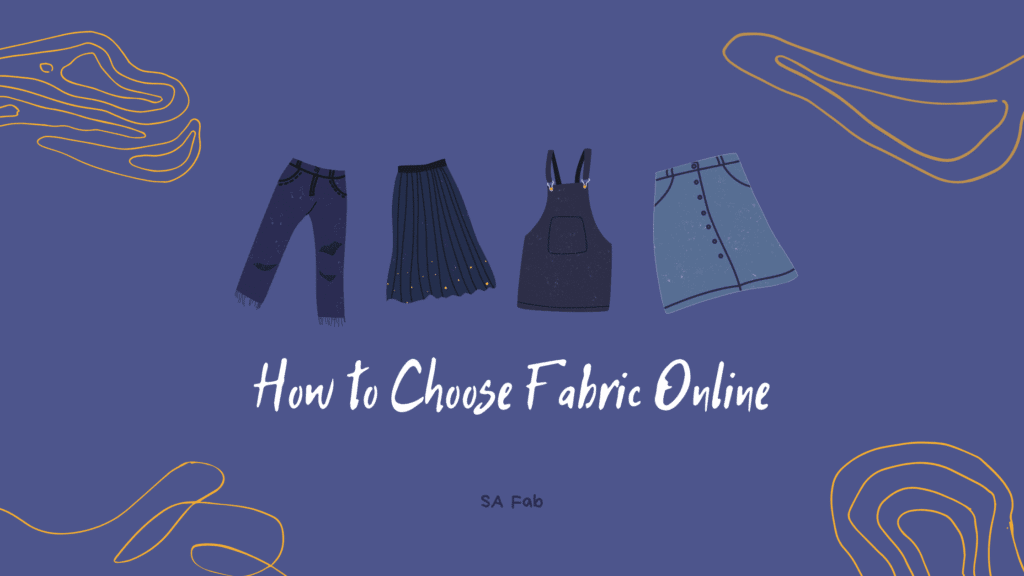How to Choose the Best Fabric Online: A Comprehensive Guide
Shopping for fabric online opens up a world of creative possibilities. It’s a digital tapestry woven with endless colors, textures, and patterns, accessible right from your home. However, for both seasoned designers and crafting novices, navigating this vast selection can be as daunting as it is exciting.
Choosing the right material is the cornerstone of any successful project. The perfect fabric can elevate a simple design into a masterpiece, while an ill-suited choice can lead to disappointment. Online fabric stores offer an incredible inventory, from breathable cottons to luxurious silks and durable synthetics. So, how do you confidently select the ideal textile without being able to touch or feel it first?
This comprehensive guide is here to demystify the process. We will walk you through understanding fabric types, evaluating quality through a screen, and navigating online shops like a pro. Get ready to buy fabric online with confidence and turn your creative visions into tangible works of art.
Understanding Fabric Types and Their Properties
The first step in your online fabric journey is to understand the language of textiles. Each fabric has a unique personality—a distinct combination of fiber, weave, weight, and drape that makes it suitable for specific applications.
- Cotton: The undisputed champion of versatility, cotton is a natural fiber known for its softness, breathability, and durability. It’s a beginner-friendly choice that is easy to sew and care for. When you search for fabric online, you’ll find cotton in various forms like poplin (for crisp shirts), voile (for light blouses), and canvas (for sturdy bags).

- Silk: The epitome of elegance, silk is a luxurious protein fiber celebrated for its incredible softness, luminous sheen, and fluid drape. It’s the perfect choice for formal gowns, delicate blouses, and high-end lingerie. However, silk is delicate and often requires special handling and dry cleaning.
- Linen: Another natural fiber, linen is derived from the flax plant and is prized for its exceptional coolness and absorbency, making it ideal for warm-weather clothing. It has a unique, slightly textured look and becomes softer with each wash. It does wrinkle easily, which is often considered part of its charm.
- Wool: The go-to fabric for warmth, wool is a natural fiber that provides excellent insulation. It’s durable, moisture-wicking, and naturally resistant to wrinkles. From fine merino wool for sweaters and base layers to heavy tweed for coats and jackets, wool is a winter essential.
- Synthetic Fabrics (Polyester, Nylon, Spandex): These man-made fibers are engineered for performance. Polyester is incredibly durable, wrinkle-resistant, and holds color well. Nylon is known for its strength and elasticity. Spandex (or Lycra) provides exceptional stretch and recovery. Synthetic blends are often used in activewear, swimwear, and costumes for their resilience and flexibility.
- Rayon (Viscose): A semi-synthetic fabric made from regenerated cellulose, rayon was created to mimic the feel of silk, cotton, and linen. It has a beautiful, fluid drape and a soft feel, making it a popular choice for dresses and blouses.
When selecting your fabric, always match its properties to your project’s needs. A structured jacket requires a fabric with body and weight, while a flowing summer dress calls for something lightweight with a graceful drape.
Key Factors to Consider Before You Buy Fabric Online
Before you click “add to cart,” take a moment to evaluate these critical factors. A methodical approach will save you time, money, and potential frustration.
- Fabric Weight: Often measured in GSM (Grams per Square Meter) or oz/yd², weight determines the fabric’s thickness and opacity.
- Lightweight (<150 GSM): Ideal for blouses, summer dresses, and linings (e.g., chiffon, voile, rayon challis).
- Medium Weight (150-300 GSM): The most versatile range, perfect for shirts, trousers, and craft projects (e.g., poplin, quilting cotton, denim).
- Heavyweight (>300 GSM): Suited for outerwear, upholstery, and structured garments (e.g., canvas, wool coating, heavy denim).
- Drape: This refers to how a fabric hangs and falls. A fabric with a fluid drape (like silk charmeuse) will cling and flow around the body. A stiff or structured drape (like organza or canvas) will hold its shape away from the body. Product descriptions or videos can often give you a clue about the drape.
- Color and Pattern Scale: Be aware that monitor calibrations can slightly alter color perception. Reputable online fabric stores strive for color accuracy in their photos, but ordering a swatch is the only surefire way to be certain. For patterned fabrics, pay close attention to the scale of the print. A large-scale floral might be perfect for a maxi dress but could overwhelm a small project.
- Quantity and Pre-Shrinkage: Always double-check your pattern’s requirements. It’s a wise practice to order about 10-15% extra fabric to account for potential pre-washing shrinkage (especially with natural fibers like cotton and linen) and any cutting mistakes.
- Care Instructions: How you’ll care for the final item is a crucial consideration. If you want a low-maintenance garment, avoid “dry clean only” fabrics like some silks and wools. Care instructions are usually listed in the product description.
Spotlight on Artisanal Fabrics: The Charm of Block Prints from SA Fab
In a world of mass production, there is a growing appreciation for fabrics that tell a story. Hand-block printing is an ancient art form where skilled artisans use carved wooden blocks to stamp intricate patterns onto fabric. Each piece is a unique work of art, bearing the subtle imperfections that are the hallmark of true craftsmanship.

For those seeking to incorporate this timeless beauty into their projects, SA Fab stands as a prominent global supplier of 100% pure cotton block-printed fabrics. We are dedicated to preserving this heritage craft while making it accessible to creators worldwide at exceptionally affordable prices.
Our pure cotton base is breathable, soft, and a delight to sew with, making it perfect for everything from custom apparel and children’s clothing to unique home décor and quilting projects.
What Makes SA Fab Your Ideal Partner for Block-Printed Fabrics?
- Authentic Craftsmanship: We partner directly with artisans to bring you genuine, handcrafted textiles.
- Convenient Rolls: Our fabric is sold in generous 10-meter rolls, ensuring you have ample material for larger projects or small-batch collections without the issue of mismatched dye lots.
- On-Demand Printing: Have a specific design in mind? We offer custom prints on demand, allowing you to bring your unique vision to life. This is a perfect solution for independent designers and small businesses.
- Global Reach: We ship our beautiful fabrics worldwide, bringing a piece of artisanal heritage right to your doorstep.
Discover a world of pattern and tradition with SA Fab. For inquiries, to view our collection, or to discuss a custom design, please contact us via email at [Your Email Here] or message us on WhatsApp at [Your WhatsApp Number Here].
How to Evaluate Fabric Quality from Your Screen
Assessing quality without physical touch requires a bit of detective work. Here’s how to do it effectively:
- Scrutinize High-Resolution Images: Zoom in! Look closely at the weave. Is it tight and even, or are there gaps and inconsistencies? A quality photo will show you the texture and surface detail.
- Read Product Descriptions Thoroughly: A good online material store will provide detailed specifications. Look for fiber composition, weight (GSM), thread count (for cotton), and width. Vague descriptions can be a red flag.
- Leverage Customer Reviews and Photos: This is your secret weapon. Reviews from other customers provide invaluable, unbiased feedback on the fabric’s true color, feel, weight, and durability. Look for customer-submitted photos of finished projects to see how the fabric behaves.
- Order Swatches (Samples): For large or important projects, ordering a swatch is the best investment you can make. For a small fee, the online fabric shop will mail you a small piece of the material. This allows you to feel the texture, check the color accuracy, and test its drape before committing to a larger order.
Avoiding Common Pitfalls When Buying Fabric Online
Steer clear of these common mistakes to ensure a smooth and successful shopping experience:
- Ignoring Shipping Costs and Return Policies: A great deal on fabric can be soured by exorbitant shipping fees. Always check the total cost at checkout. Furthermore, understand the store’s return policy. Can you return cut fabric? Is there a restocking fee? Knowing this beforehand prevents future headaches.
- Forgetting about Pattern Repeats: If you’re buying a fabric with a large, directional pattern, you will need extra yardage to ensure you can match the pattern across seams. This is a detail that can make or break a professional-looking garment.
- Falling for “Too Good to Be True” Deals: While sales are great, be wary of extremely low prices from unknown sellers. Always choose reputable online fabric stores known for their quality and customer service.
Exploring Sustainable and Ethical Fabric Choices
As consumers become more environmentally conscious, the demand for sustainable fabrics has grown. Many online fabric stores now have dedicated sections for eco-friendly options. Look for:
- Organic Fabrics: Grown without synthetic pesticides or fertilizers (e.g., organic cotton).
- Recycled Fabrics: Made from post-consumer waste, like polyester from recycled bottles.
- Deadstock Fabric: Leftover fabric from fashion houses and designers. Buying deadstock prevents high-quality material from ending up in a landfill.
- Certifications: Look for labels like GOTS (Global Organic Textile Standard) or OEKO-TEX®, which certify that the fabric is free from harmful substances.
Final Tips for a Successful Online Fabric Shopping Experience
You are now equipped with the knowledge to navigate the world of online fabric shopping. Before you embark on your next project, keep these final tips in mind:
- Create a Project Plan: Know exactly what you are making, what properties the fabric needs, and how much you require before you start browsing.
- Bookmark Your Favorites: When you find a reliable online fabric shop with great service and quality, save it! Building a list of trusted suppliers makes future shopping much easier.
- Stay Curious: Don’t be afraid to try something new. Order a swatch of a fabric you’ve never used before. The vast selection online is an invitation to experiment and expand your creative horizons.
Happy sewing
